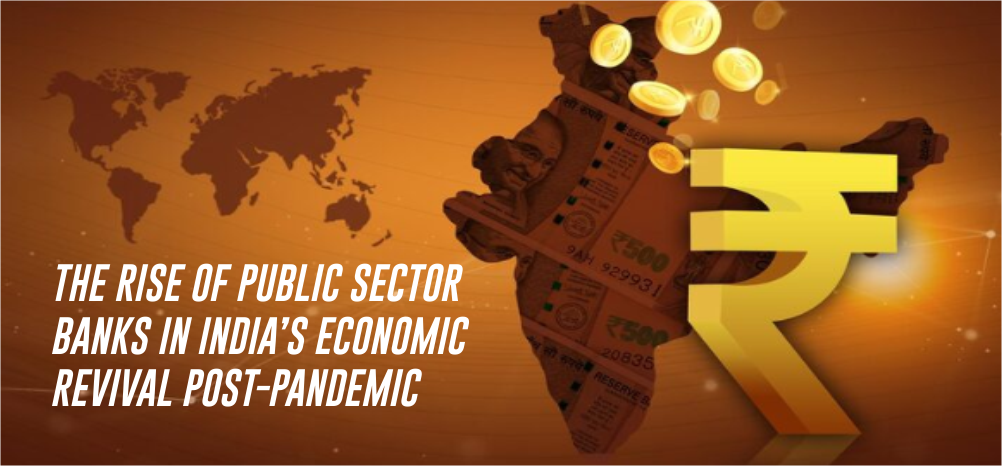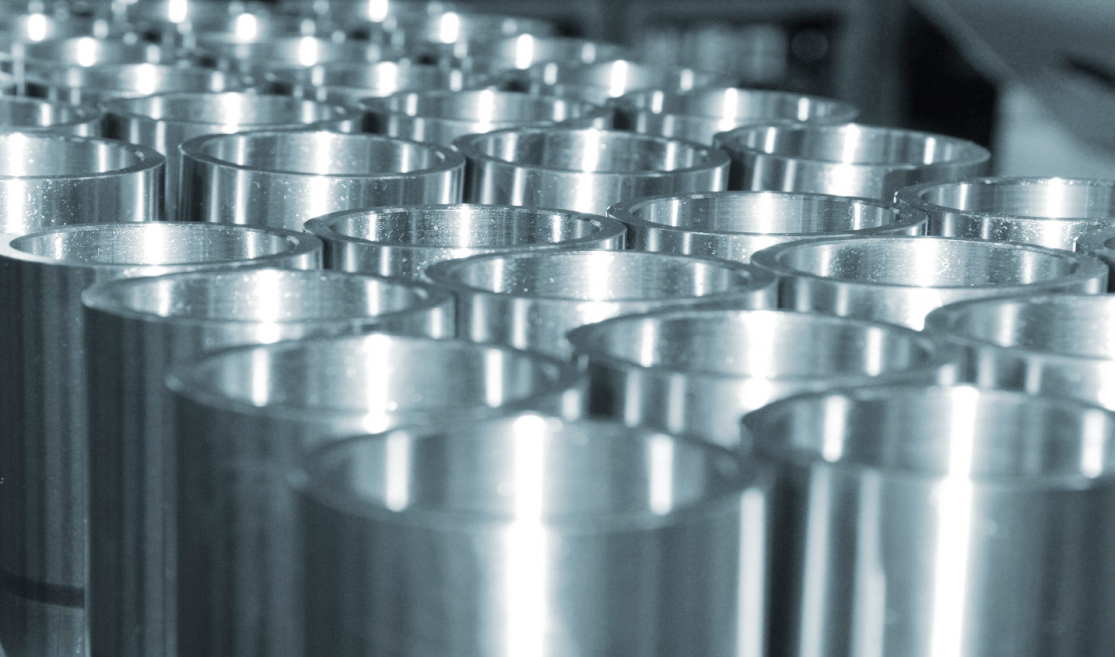India, on its quest to become a global superpower, has made significant strides towards developing its engineering sector. The Government has appointed Engineering Export Promotion Council (EEPC) as the apex body in charge of the promotion of engineering goods, products, and services from India. India exports transport equipment, capital goods, other machinery/equipment, and light engineering products such as castings, forgings, and fasteners to various countries of the world. The Indian semiconductor industry offers a high growth potential area because industries which source semiconductors as inputs are witnessing high demand.
India’s Capital Goods manufacturing industry serves as a strong base for its engagement across sectors such as Engineering, Construction, Infrastructure and Consumer goods, amongst others. It accounts for 27% of the total factories in the industrial sector and represents 63% of the overall foreign collaborations. Capital Goods sector contributes 1.9% to overall India’s GDP.
The Quick Estimates of IIP stands at 153.3 in June 2025 against 151.0 in June 2024. The Indices of Industrial Production for the Mining, Manufacturing and Electricity sectors for the month of June 2025 stand at 123.2, 152.3 and 217.1 respectively.
The heavy engineering and machine tools sector are a vital component of the capital goods industry. Currently, India's capital goods sector is receiving considerable focus due to its essential contribution to industrial growth and economic development. Notably, the production within this sector has surged from Rs. 2,29,533 crore (US$ 27.2 billion) in CY15 to Rs. 4,29,001 crore (US$ 50.7 billion) in CY24.
The India Engineering Research and Development (ER&D) Services Market is estimated at Rs. 11,42,819 crore (US$ 133.71 billion) in 2025 and is expected to reach Rs. 18,62,391 crore (US$ 217.90 billion) by 2030, at a CAGR of 10.3% during 2025-2030.
The Government’s ‘Vision Plan 2030’ proposed an action plan to become a manufacturing and export hub for construction equipment and propel the development of world-class infrastructure in the country.
The India Construction Equipment Market size is estimated at Rs. 69,046 crore (US$ 7.91 billion) in 2025 and is expected to reach Rs. 1,02,827 crore (US$ 11.78 billion) by 2030, at a CAGR of 8.3% during the forecast period (2025-2030).
The production of the capital goods sector increased from Rs. 2,29,533 crore (US$ 27.2 billion) in CY15 to Rs. 4,29,001 crore (US$ 50.7 billion) in CY24.
In FY25, exports of engineering goods reached Rs. 9,86,328 crore (US$ 116.67 billion).
In the Union Budget 2025-26, the government allocated Rs. 2,87,333 crore (US$ 330.8 billion) to the Ministry of Road Transport and Highways, a 2.4% rise over Rs. 2,80,500 crore in 2024-25.
The construction equipment industry is expected to sell 1,65,097 units by 2028.
As per the budget estimates (BE) of FY26, the production-linked incentive (PLI) scheme for the automobile and auto components sector got a massive boost at Rs. 2,818.85 crore (US$ 322.90 million) in FY26.
As of March 2025, the National Highways Authority of India’s InvIT (NHIT) had raised over Rs. 46,000 crore (US$ 5.4 billion) since inception, including a record Rs. 18,380 crore in its latest monetisation round.
The Ministry of Heavy Industries (MHI) launched 2 Production Linked Incentive (PLI) Schemes, namely PLI Scheme for Automobile and Auto Component Industry, and PLI Scheme for National Programme on Advanced Chemistry Cell (ACC) Battery Storage. The PLI Scheme for the automobile and auto components industry has been launched with a total budgetary outlay of Rs. 25,938 crore (US$ 3.17 billion) for a period of 5 years (FY23 to FY27).
The Indian machine tool market size reached US$ 1.5 billion in 2023 and is expected to reach US$ 3.2 billion by 2032, exhibiting a growth rate (CAGR) of 8.2% during 2024-32. The manufacturers of machine tools are mostly SMEs, few of them are mid-sized manufacturers which have an annual turnover varying between Rs. 300-500 crore (US$ 36-60 million). The types of machine tools currently manufactured are general/special purpose machines, standard Computer Numerical Control (CNC) machines, gear cutting, grinding, medium size machines, electrical discharge machining (EDM), presses, press brakes, pipe bending, rolling, bending machines, etc.
The India Foundry Market size is estimated at US$ 19.46 billion in 2024, and is expected to reach US$ 31.77 billion by 2029, growing at a CAGR of 10.30% during the forecast period (2024-2029). There are in excess of 5,000 foundries in India of which about 85% are small units, 10% are medium sized and 5% are large, organized foundries. Foundry industry has a turnover of approx. US$ 20 billion with exports of approx. US$ 3.54 billion. India is the second largest producer of castings globally.
There are 750-800 domestic Medical Devices manufacturers in India, with an average investment of US$ 2.3-2.7 million and an average turnover of US$ 6.2-6.9 million. India is the 4th largest market for medical devices in Asia, among the top 20 markets for medical devices worldwide. India’s expected export of medical devices will reach ~ US$ 10 billion by 2025.
The Indian industrial fasteners market was valued at US$ 9,064 million in 2022 and is projected to reach US$ 17,868 million by 2030, registering a CAGR of 7.9% during the forecast period (2023-2030). The Indian automotive sector is the largest consumer of industrial fasteners, accounting for a major share of the market by 2023.
India steam boiler systems market size is expected to reach nearly US$ 22.56 billion by 2027 with the CAGR of 4.63% during the forecast period. Indian boiler manufacturer industry is worth for a sum of US$ 146 million contributing 40% to the Indian economy. The Indian boiler industry is expected to grow at a rate of 6% to surpass US$ 194 million
The India generator sets market is expected to grow at a CAGR of more than 5% over the period of 2020-25. The current annual production capacity of domestic wind turbines is about 15,000 MW. In 2022, GE Steam Power signed a US$ 165 million contract with Bharat Heavy Electricals Ltd to supply 3 nuclear steam turbines for India’s domestic nuclear power programme. The India diesel gensets (generator sets) market is expected to reach US$ 2.78 billion by 2030 compared to US$ 1.48 billion by 2022 at a CAGR of 8.20%.
The India power transformer market generated a revenue of Rs. 16,063 crore (US$ 1.9 billion) in FY22 and is expected to reach Rs. 28,744 crore (US$ 3.4 billion) by FY30. Factors such as increasing power generation capacity to meet energy demand and expansion of transmission and distribution systems are likely to drive the India power transformer market. A whole range of power and distribution transformers, including a special type of transformer required for furnaces, electric tracts, and rectifiers, are manufactured in India.
India switchgear market size was estimated at US$ 9.75 million in 2022 and is expected to grow at CAGR of 7.12% reaching a value of US$ 18.23 million by 2029.
Automobile retail sales in FY25 grew 6.46% over the previous year with passenger vehicles (PV) growing by 4.87%, two-wheelers (2W) retail sales rising 7.71% and commercial vehicles (CV) de-growing by 0.17%, according to data released by Federation of Automobile Dealers (FADA).
The total EV sales reached 20 lakh in FY25, 50% of the sales is contributed by E2W.
Export of the total number of automobiles stood at 5.3 million, growth of 19% YoY in FY25.
Passenger vehicle exports rose by 15% to 7,70,364 units, marking the segment’s best-ever performance, supported by the demand for global models manufactured in India.
Passenger vehicle sales in India reached an all-time high of 4.3 million units in the financial year FY25, according to data released by the Society of Indian Automobile Manufacturers (SIAM).
The Indian agricultural equipment market has reached a value US$ 10.25 billion in 2023 and is anticipated to grow at a CAGR of 5.24% through 2029.The Indian agricultural machinery market is segmented by type of tractors, equipment, irrigation machinery, harvesting machinery, and haying and forage machinery. India's tractor exports increased by 16% YoY, reaching 8487 units in February 2024. India's farm equipment market is likely to grow to US$ 18 billion by 2025.
Engineering accounts for about 25% of India’s total global exports in the goods sector and is 1 of the largest foreign exchange earners. In FY25, exports of engineering goods reached at Rs. 9,86,328 crore (US$ 116.67 billion). The top 5 export destinations for engineering goods during FY25 were USA, UAE, Saudi Arabia, Germany and Italy.
Engineering export from India can be divided into eight major categories. Out of the eight categories, iron & steel and products made from iron & steel contributed 17.0% to the total engineering exports in FY25. Auto and auto parts (19.9%) and industrial machinery (17%) also contributed a major share to total exports.
Creation of a significant number of special economic zones (SEZs) across the country has been approved. The development of Delhi Mumbai Industrial Corridor (DMIC) across 7 states will further bolster the engineering sector. Reliance Defence and Engineering Ltd has signed an agreement with the US Navy for undertaking service, maintenance, and repair of Seventh Fleet of US Navy at the Reliance Shipyard at Pipavav in Gujarat.
With 100% FDI allowed through the automatic route, major international players such as Cummins, GE, ABB, and Alfa Laval have entered the Indian engineering sector due to growth opportunities. American plane maker Boeing Corporation has launched the Boeing India Engineering & Technology Centre in Bengaluru.
Recent achievements under the Capital Goods Scheme:
- Sitarc, Coimbatore: Developed 6-inch BLDC submersible pump (88% motor efficiency, 78% pump efficiency), cutting imports by 80%; awarded by UNIDO.
- CMTI: Introduced high-speed rapier loom (450 RPM) at ITMA 2023, Milan; implemented IIoT on Toyota’s engine line controlling 64 machines.
- ARAI, Pune: Established India’s first battery and BMS testing facility.
- I-4.0 India @ IISc Bengaluru: Delivered 6 smart technologies, 5 smart tools, 14 solutions in digital twin, VR, robotics, sustainability, additive manufacturing.
- ARAI-AMTIF Industry Accelerator: Enabled Raptee Energy to launch high-voltage motorcycle; developed thermally stable sodium-ion batteries.
- Centres of Excellence (CoEs): Eight CoEs established, developing 30 niche indigenous technologies in machine tools, additive manufacturing, textile machinery, welding robots, alloy design, earth moving machinery, and sensor technologies at leading institutes (IITs, IISc, CMTI).
- Common Engineering Facility Centres (CEFCs): 15 CEFCs set up, including four Industry 4.0 SAMARTH Centres (IISc Bengaluru, C4i4 Lab Pune, CMTI Bengaluru, IIT Delhi) and six web-based Technology Innovation Platforms (TIPs).
- Technology Innovation Platforms: TIPs connect India’s technical resources and industry to identify challenges, crowdsource solutions, and support start-ups and angel funding.
- Outreach: Over 76,000 students, experts, institutes, industries, and labs have registered on these platforms.
- Siemens Energy India is undertaking a capex of Rs. 280 crore (US$ 32.8 million) at its Aurangabad, Maharashtra factory. Earlier in FY24, the company had announced Rs. 460 crore (US$ 53.9 million) for its transformer factory in Kalwa, Maharashtra, and Rs. 330 crore (US$ 38.6 million) for its Gas-Insulated Switchgear (GIS) factory in Goa.
- Larsen & Toubro allocated land in Gujarat for a green hydrogen and derivatives plant and acquired the remaining 26% stake in L&T Special Steels and Heavy Forgings in FY25.
In October 2023, the Automotive Research Association of India (ARAI) signed an agreement with IIT Guwahati to set up a common engineering facility centre titled ‘Digital Twin Centre for Emerging Automotive Systems’ in a hub and spoke model.
In July 2023, Bharat Heavy Electricals Limited (BHEL) signed a Technical Assistance and License Agreement with General Electric Technology GmbH Switzerland for Gas Turbines.
In February 2023, Reliance Industries Limited (RIL) and its vehicle partner Ashok Leyland unveiled India’s first Hydrogen Internal Combustion Engine (H2-ICE) technology solution for heavy duty trucks at the India Energy Week in Bengaluru.
State-run PSUs Nuclear Power Corporation of India Ltd (NPCIL) and Bharat Heavy Electricals Ltd (BHEL) have signed a memorandum of understanding (MoU) in April 2023 to jointly pursue business opportunities in the area of Nuclear Power Plants based on Pressurized Heavy Water Reactor (PHWR) technology.
The Ministry of Heavy Industries, in March 2023, sanctioned Rs. 800 crore (US$ 97.3 million) under FAME India Scheme Phase-II to 3 PSU oil marketing companies (OMC) for setting up 7,432 public fast charging EV stations across the country.
Companies across this sector are partnering with technology providers to enhance their capabilities and sustain the market uncertainties. In November 2022, L&T Infotech and Mindtree merged to make India’s fifth-largest IT company, LTI Mindtree, that will help businesses proactively take on and shape the future by harnessing the full power of digital technologies.
In January 2023, Bharat Heavy Electricals Ltd (BHEL) bagged the order for renovation and modernization of 200 MW Unit-3 and 210 MW Unit-5 steam turbines at Ukai thermal power station in Gujarat. ABB India ABB can utilize around Rs. 1,800 crore (US$ 217.2 million) of its cash balance for inorganic growth or acquisitions apart from organic expansion plan.
Making process changes — including the adjustment of a company’s physical footprint, outsourcing, or offshoring of particular processes, changes to organizational structure — can help increase efficiency. Strong analytical capacity will allow companies to slice and dice their operational data, identifying opportunities to make operations more efficient — such as workforce planning.
In January 2023, L&T Technology Services Limited announced to acquire the Smart World & Communication (SWC) Business of L&T, to combine synergies and take offerings in Next-Gen Communications, Sustainable Spaces and Cybersecurity to the global market.
To increase the employability of engineering graduates in the country, AICTE (All India council of technical education) leadership is taking a lot of efforts and recommends model curriculum for engineering programs like AI, IoT, Robotics, Block chain, Machine learning, Data Science and Cyber security. In October 2022, NSIC Signs MoU with Phillips Machine Tools India Pvt. Ltd. for Skill Development Training in Additive Technologies which is the future of manufacturing. In June 2022: Ministry of Heavy Industries (MHI) and Ministry of Skill Development and Entrepreneurship (MSDE) sign MoU to facilitate training in engineering trades to boost capital goods sector. In May 2022, MHI signs an MoU with National Research Development Corporation to facilitate various activities for smooth implementation of the Scheme for Enhancement of Competitiveness in the Indian Capital Goods Sector.
India's power generation target is estimated to be 1,750 BUs in FY24, up from 1,624.15 BUs of actual generation in FY23. The total power consumption in India is 139.23 billion units as of June 2023. The growing energy requirement will require enhancement of installed power capacity. The installed power capacity in India is around 446.19 GW as of June 2024. Industrial sector is the largest consumer of energy consuming about 50% of the total commercial energy produced in the country followed by the transport sec�tor.
Voluntary Vehicle-Fleet Modernisation Programme (VVMP)- The objectives of the policy are to reduce population of old and defective vehicles, achieve reduction in vehicular air pollutants to fulfil India’s climate commitments, improve road and vehicular safety, achieve better fuel efficiency, formalize the currently informal vehicle scrapping industry and boost availability of low-cost raw materials for automotive, steel and electronics industry. The policy will bring in investments of Rs. 10,000 crore (US$ 1.35 billion) to set up 450-500 Automated Testing Stations (ATS) and 60-70 Registered Vehicle Scrapping Facilities (RVSF) across the country. The policy has proposed to push 28-million-decade old vehicles off the roads.
New export policy in Uttar Pradesh: Export policy is being established for the State of Uttar Pradesh to tap onto opportunities in international market, optimum utilization of the resources of the state, employment generation and to synergize with the Foreign Trade Policy 2020-25. The objective of this policy is to promote development and competition in the field of exports, to provide necessary export-related assistance and services to export ancillary institutions, to establish and develop technical and physical infrastructure to increase exports from the state.
FDI inflow depends on a host of factors such as availability of natural resource, market size, infrastructure, political and general investment climate as well as macro-economic stability and investment decision of foreign investors. The Government reviews the FDI policy on an ongoing basis and makes significant changes from time to time, to ensure that India remains attractive and investor friendly destination. To further liberalize and simplify FDI policy for providing Ease of doing business and attract investments, reforms have been undertaken recently across sectors such as Coal Mining, Contract Manufacturing, Digital Media, Single Brand Retail Trading, Civil Aviation, Defence, Insurance and Telecom.
Under Union budget FY26, the defence sector was allocated a budget of Rs. 6.81 lakh crore (US$ 80.5 billion). In 2023, Defence Minister of India has called upon Indian and global industry leaders to support the government’s endeavour to design, develop and manufacture cutting-edge products, using critical technologies within India to attain complete ‘Aatmanirbharta’ in defence. The vision of the government is to achieve a turnover of US$ 25 billion including export of US$ 5 billion in Aerospace and Defence goods and services by 2025. Ministry of Defence released the fifth 'Positive Indigenisation List' comprising of 98 defence equipment to be manufactured locally in October 2023. With the notification of 164 additional items, the total number of indigenised items till December 2022 from 'Positive Indigenisation Lists' of the Department of Defence Production DDP stands at 2,736, worth an import substitution value of Rs. 2,570 crore (US$ 312.5 million). The government has also announced 2 dedicated Defence Industrial Corridors in the States of Tamil Nadu and Uttar Pradesh to act as clusters of defence manufacturing that leverage existing infrastructure, and human capital.
India’s total installed power capacity reached 476 GW as of June 2025.
Machine tools - The machine tools market is expected to reach US$ 3.4 billion by FY32 from current level of Rs. 14,372 crore (US$ 1.7 billion), exhibiting a growth rate (CAGR) of 7.8% during 2024-32. The growing prominence of automation across numerous manufacturing processes, to enhance their productivity and meet quality standards, is currently driving the India machine tools market.
Material handling equipment - The India Automated Material Handling market size is estimated at US$ 1.47 billion in 2024, and is expected to reach US$ 2.66 billion by 2029, growing at a CAGR of 12.70% during the forecast period (2024-2029). The Indian material handling sector has observed a momentous growth in recent years due to rising investment in infrastructure development, increased demand for higher automation, and safe working practices in the manufacturing area.
The Indian electrical equipment market is set to experience significant growth in the coming years, with a forecasted incremental growth of Rs. 6,44,533 crore (US$ 76.24 billion) at a compound annual growth rate (CAGR) of 14.3% from FY24 to FY28.
India constructed 5,614 kms of highways in FY25, comprising expressways, national, state, district and village roads. The government has also set a target of constructing 10,000 km of national highways in FY26.
100% FDI is allowed through the automatic route, with major international players looking for growth opportunities to enter the Indian engineering sector. The engineering sector in India attracts immense interest from foreign players as it enjoys a comparative advantage in terms of manufacturing cost, technology, and innovation. The above, coupled with favourable regulatory policies and growth in the manufacturing sector, has allowed several foreign players to invest in India.
Microsoft India and Larsen & Toubro (L&T) have signed a Memorandum of Understanding (MoU) to build a regulated sector cloud product. The 2 businesses will collaborate with a select group of significant customers in regulated industries to design architectures and roadmaps to help them achieve their digital transformation goals and transition traditional datacentres to hybrid cloud architecture.
Tesla, the electric car maker, has set up a R&D centre in Bengaluru and registered its subsidiary as Tesla India Motors and Energy Private Limited.
With the aim to boost the manufacturing sector, the government has relaxed the excise duties on factory gate tax, capital goods, consumer durables and vehicles.
To increase the employability of engineering graduates in the country, the Ministry of Human Resource Development is working along with Sector Skill Councils (SSCs) under National Skill Development Corporation (NSDC) to undertake apprenticeship/internship embedded degree programmes with a core focus on the development of knowledge, skills, aptitude, and on-job training.
The AICTE has entered into collaborations with the MSME ministry, NHAI and DM offices in 150 districts to facilitate engineering internships for students.
Prime Minister Mr. Narendra Modi, on the country's 75th Independence Day, announced plans to invest Rs. 100 trillion (US$ 1.35 trillion) in infrastructure to stimulate economic development and generate employment.
The government has announced its PLI scheme of Rs. 10,683 crore (US$ 1.4 billion) for textiles, specifically aimed at boosting production of man-made fibre (MMF) fabric, MMF apparel and technical textiles. The government has also announced a PLI scheme for automobiles and auto components worth Rs. 25,938 crore (US$ 3.49 billion). This scheme is expected to bring investments of Rs. 42,500 (US$ 5.74 billion) by 2026.
According to the National Association of Software and Service Companies (NASSCOM), India’s share in the global engineering and research and development (ER&D) market is likely to expand at a CAGR of 12-13% to reach US$ 63 billion by 2025.
By 2030, India has plans to invest US$ 34.2 billion to set up an interstate transmission network (ISTS) in order to evacuate renewable energy.
India’s engineering and capital goods sector is on a strong growth trajectory, supported by government vision, rising exports, and sustained innovation across industries. With increasing global collaborations, robust policy support, and a thriving ecosystem of manufacturing and research, the sector is set to play a pivotal role in driving industrial growth and positioning India as a global hub for engineering excellence in the years ahead.














